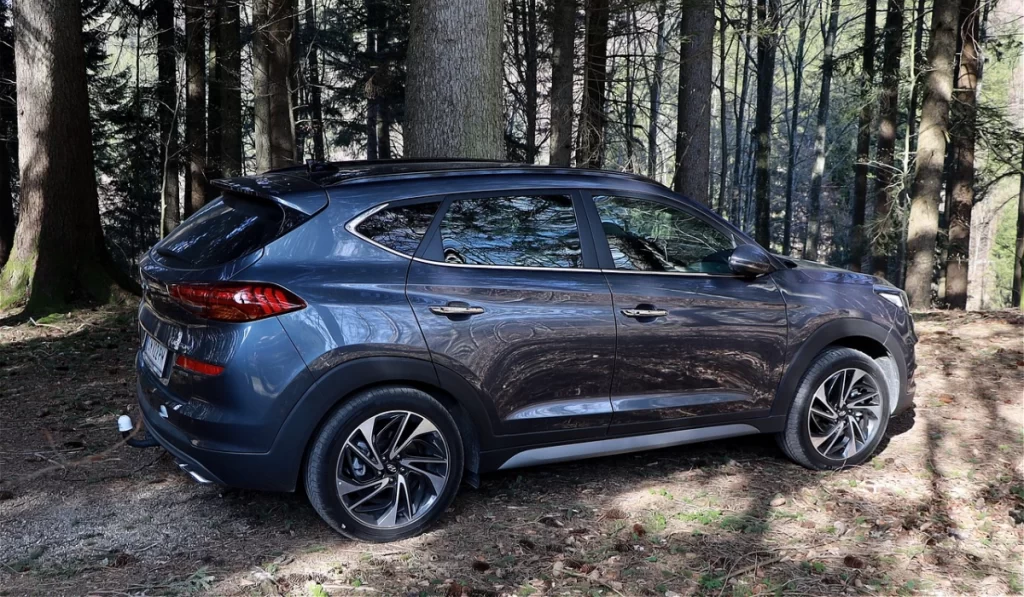AWD and 4WD are two industry terms that are often used interchangeably, but they are not the same. Both All-wheel drive (AWD) and four-wheel drive (4WD) are technologies that send power from the engine to all four wheels of a vehicle, but they do so in different ways. AWD is typically found in passenger cars and crossover SUVs, while 4WD is more commonly used in trucks and SUVs designed for off-road use.
AWD systems are designed to improve traction in all driving conditions, including dry pavement, rain, and snow. These systems use sensors to monitor the vehicle’s speed, wheel slip, and other factors to determine how much power to send to each wheel. This makes AWD vehicles more stable and easier to control in slippery conditions.

On the other hand, 4WD systems are designed for off-road use and are typically found in trucks and SUVs. These systems are designed to provide maximum traction in extreme conditions, such as deep mud or snow, and are often used for towing or hauling heavy loads. Unlike AWD, 4WD systems typically have a low-range transfer case that allows the driver to select between two or four-wheel drive modes, depending on the driving conditions.
Table of Contents
Understanding AWD
Definition of AWD
All-Wheel Drive (AWD) is a drivetrain system that distributes power to all four wheels of a vehicle. This means that all four wheels can receive power from the engine, and can work together to provide better traction and stability on the road. AWD is typically found in cars, SUVs, and crossovers, and is designed to provide better performance in a variety of driving conditions, including wet, snowy, or uneven terrain.
Benefits of AWD
One of the main benefits of AWD is improved traction and stability on the road. Because power is distributed to all four wheels, AWD vehicles are better equipped to handle slippery or uneven road conditions, such as rain, snow, or ice. AWD can also improve acceleration and handling, particularly in off-road or high-performance vehicles.
Another benefit of AWD is that it can provide better fuel efficiency than four-wheel drive (4WD) systems. AWD systems are typically more lightweight and less complex than 4WD systems, which can help to improve the overall efficiency of the vehicle.
Limitations of AWD
While AWD can provide better traction and handling in certain driving conditions, it does have some limitations. AWD systems can be more expensive to manufacture and maintain than two-wheel drive (2WD) systems, which can increase the overall cost of the vehicle. AWD systems can also add weight to the vehicle, which can reduce fuel efficiency and performance.
In addition, AWD systems are not always necessary for all drivers. For example, drivers who live in areas with mild weather conditions may not need the added traction and stability provided by AWD. Additionally, AWD can be less effective in extreme off-road conditions, where 4WD may be necessary to provide the necessary traction and power.
Understanding 4WD

Definition of 4WD
Four-wheel drive (4WD) is a type of drivetrain system that distributes power to all four wheels of a vehicle. It is designed to provide maximum traction and stability on rough terrain, such as snow, mud, and rocky roads. In a 4WD system, the power is evenly distributed between the front and rear axles, which allows the vehicle to maintain its grip on the road and prevent wheel slippage.
Benefits of 4WD
The main benefit of 4WD is its ability to provide better traction and stability on challenging terrain. This makes it an ideal choice for off-road driving and for people who live in areas with harsh weather conditions. 4WD vehicles are also capable of towing heavy loads and hauling cargo, which makes them popular among farmers, construction workers, and outdoor enthusiasts.
Limitations of 4WD
While 4WD provides several benefits, it also has some limitations. One of the main drawbacks of 4WD is its reduced fuel efficiency compared to two-wheel drive (2WD) vehicles. This is because 4WD systems are heavier and more complex, which requires more energy to operate. Additionally, 4WD vehicles are more expensive to purchase and maintain than 2WD vehicles.
Another limitation of 4WD is that it is not suitable for high-speed driving on smooth roads. This is because 4WD systems are designed for low-speed traction and stability, which can make them unstable at high speeds. Therefore, 4WD vehicles are primarily used for off-road driving and for low-speed applications.
Comparing AWD and 4WD Drivetrains
When it comes to choosing between AWD and 4WD, there are several factors to consider. Here, we’ll compare the two in terms of performance, fuel efficiency, and cost.
Performance Comparison
Both AWD and 4WD are designed to improve traction and handling in challenging driving conditions. However, there are some differences between the two. AWD systems are typically better suited for on-road driving, providing improved traction in wet or slippery conditions. 4WD systems, on the other hand, are designed for off-road use, providing better traction on rough terrain and in extreme weather conditions.
In terms of handling, AWD vehicles tend to handle more like traditional two-wheel drive vehicles, while 4WD vehicles can handle more like off-road vehicles. AWD vehicles generally provide better handling on paved roads, while 4WD vehicles are better suited for off-road use.
Fuel Efficiency Comparison
Because AWD vehicles are designed to provide better traction and handling on the road, they tend to be heavier and less fuel-efficient than 2WD vehicles. 4WD vehicles are even heavier and less fuel-efficient than AWD vehicles, as they are designed for more extreme off-road use.
That being said, advances in technology have made AWD and 4WD vehicles much more fuel-efficient than they used to be. Some modern AWD and 4WD vehicles have fuel economy ratings that are nearly as good as their 2WD counterparts.
Cost Comparison
AWD and 4WD vehicles tend to be more expensive than their 2WD counterparts. AWD systems are typically more expensive to manufacture and install, and 4WD systems are even more complex and expensive. Additionally, AWD and 4WD vehicles tend to be heavier and require more maintenance than 2WD vehicles, which can add to their overall cost of ownership.
The choice between AWD and 4WD will depend on your specific needs and driving conditions. If you live in an area with frequent snow or rain, an AWD vehicle may be a good choice. If you plan on doing a lot of off-road driving, a 4WD vehicle may be a better option. However, keep in mind that both types of vehicles tend to be more expensive and less fuel-efficient than their 2WD counterparts.
Choosing Between AWD and 4WD
When deciding between all-wheel drive (AWD) and four-wheel drive (4WD), there are a few factors to consider. This section will explore some of the most important factors to keep in mind when making your decision.
Consideration Factors
One of the most important factors to consider is the type of terrain you will be driving on. AWD is generally better suited for driving on paved roads, while 4WD is better suited for off-road driving. If you plan on doing a lot of off-road driving, then 4WD may be the better choice for you.
Another factor to consider is the climate in which you will be driving. AWD is generally better suited for driving in wet or slippery conditions, while 4WD is better suited for driving in snow or ice.
Fuel efficiency is also an important factor to consider. AWD vehicles tend to be less fuel efficient than 4WD vehicles, so if you are looking for a vehicle with better gas mileage, then 4WD may be the better choice.
Common Scenarios
Here are a few common scenarios where one type of drive may be more suitable than the other:
- If you live in an area with mild winters and do not plan on off-roading, then AWD may be the better choice for you.
- If you live in an area with harsh winters and plan on doing a lot of off-roading, then 4WD may be the better choice for you.
- If you frequently drive on unpaved roads or in rugged terrain, then 4WD may be the better choice for you.
- If you frequently drive on paved roads and want better traction in wet conditions, then AWD may be the better choice for you.
Ultimately, the decision between AWD and 4WD will depend on your specific needs and driving habits. Consider the factors above and choose the option that best suits your needs.

